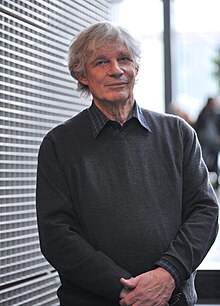Stuart Kauffman | |
|---|---|
 Stuart Kauffman in April 2010 | |
| Born | September 28, 1939 |
| Alma mater | Dartmouth College Oxford University University of California, San Francisco |
| Known for | NK model, origin of life, gene regulatory networks, adjacent possible, poised realm |
| Awards | Wiener Medal (1969) Marshall Scholar MacArthur Fellow |
| Scientific career | |
| Institutions | University of Chicago University of Pennsylvania University of Calgary |
Stuart Alan Kauffman (born September 28, 1939) is an American medical doctor, theoretical biologist, and complex systems researcher who studies the origin of life on Earth. He was a professor at the University of Chicago, University of Pennsylvania, and University of Calgary. He is currently emeritus professor of biochemistry at the University of Pennsylvania and affiliate faculty at the Institute for Systems Biology. He has a number of awards including a MacArthur Fellowship and a Wiener Medal.
He is best known for arguing that the complexity of biological systems and organisms might result as much from self-organization and far-from-equilibrium dynamics as from Darwinian natural selection, as discussed in his book Origins of Order (1993). In 1967[1] and 1969[2] he used random Boolean networks to investigate generic self-organizing properties of gene regulatory networks, proposing that cell types are dynamical attractors in gene regulatory networks and that cell differentiation can be understood as transitions between attractors. Recent evidence suggests that cell types in humans and other organisms are attractors.[3][4] In 1971 he suggested that a zygote may not be able to access all the cell type attractors in its gene regulatory network during development and that some of the developmentally inaccessible cell types might be cancer cell types.[5] This suggested the possibility of "cancer differentiation therapy". He also proposed the self-organized emergence of collectively autocatalytic sets of polymers, specifically peptides, for the origin of molecular reproduction,[6][7] which have found experimental support.[8][9]